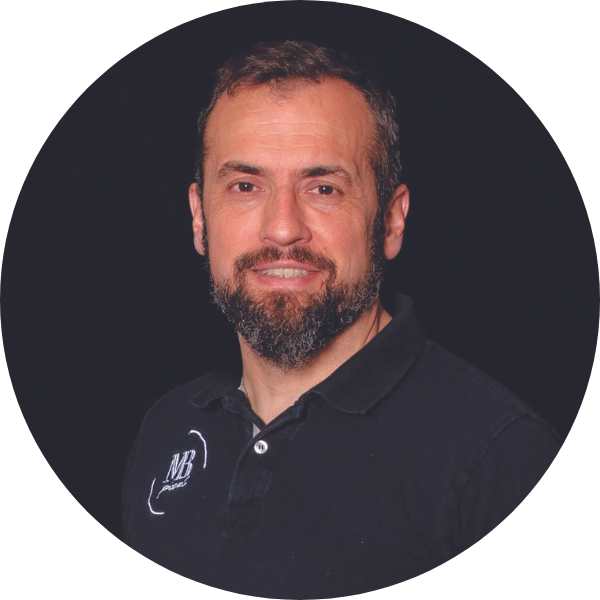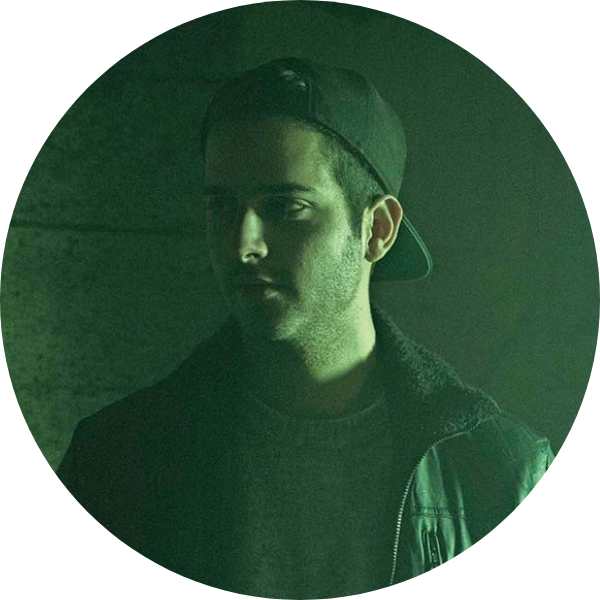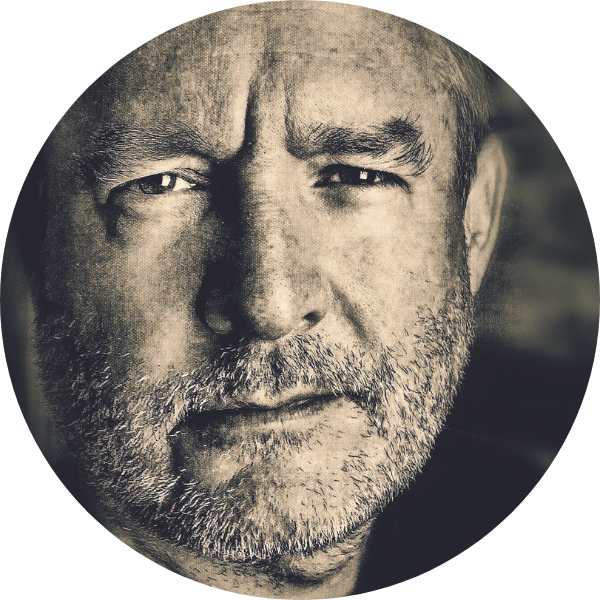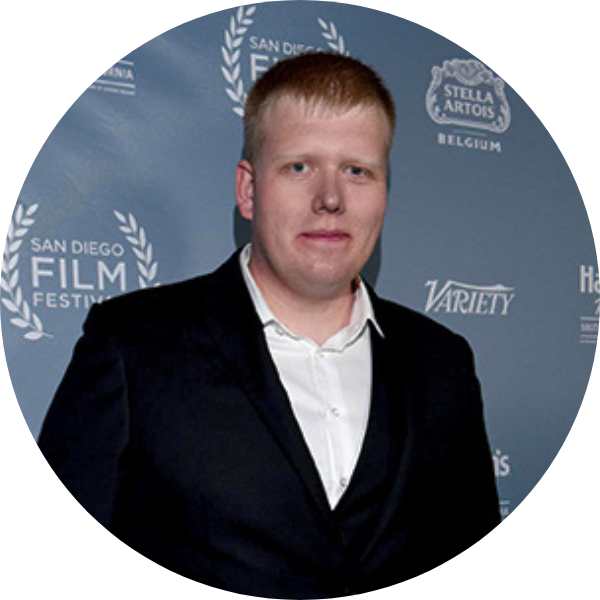Six SAIT grads talk about their work in major film, television and digital media centres worldwide.
Watching the movie credits for 20th Century Studios’ Prey, Rhett Miller (CTSR ’06) couldn’t contain his enthusiasm. “I was driving my wife crazy. I paused the TV about eight or nine times saying, “I taught him, taught him, taught her, taught him, taught him” — you know. All those names. So it was pretty fun!”
As a SAIT alumnus working in the industry through his company, Rhettoric Media, and as an instructor for 15 years with SAIT’s Film and Video Production (FVP) program, recognizing all those names affirmed what Miller has known all along: working in the arts — making magic — is a rewarding career choice with global opportunities.
“You need to be good at whatever it is you’re doing,” says Miller. “There’s the technical side, there’s the creative side, there’s the managerial side.” There’s also the people side, which Miller says can be every bit as important as impressive professional skill sets — if not more so.
“You might be the most talented camera operator, cinematographer — whatever — that anyone’s ever seen, but if no one wants to hang out with you....”
For more than 50 years, SAIT grads have been successfully leveraging their passion, personality and skills in the film, video and — most recently — gaming industries across Canada and around the world. LINK virtually hung out with a few of them to ask what they’re up to.

Instructor, Film and Video Production
SAIT School for Advanced Digital Technology
Photo: Jeremie Lajoie
Sylvain Moniot Beaumont (CTSR '01)
France

Cinematographer, director, producer, editor, colourist. Sylvain's international experience in television, documentaries, commercials and corporate video led him to start his own company, MB pixel, where he showcases the work of others through his art.
Photo: E. Antoine Photographie
Liberté. Entrepreneur. Le talent artistique.
At this point in his career, Moniot Beaumont has amassed all the technical skills, experience and equipment needed to produce creative corporate videos and documentaries that captivate, inform, educate, and — as appropriate — stimulate sales. He’s compiled an impressive portfolio and a network of industry professionals for collaborative ventures. Creative ideas and expression are fluid, bolstered by well-honed know-how.
Pretty much the only hurdle Moniot Beaumont consistently comes up against in running his own video production company is one that is unceremoniously pragmatic.
“My greatest challenge is finding new clients all the time,” he says.
Larger corporations typically have their own in-house production talent so, as an independent producer, Moniot Beaumont’s target clients tend to come from the small-business, limited-budget domain. “They do one corporate video and then maybe nothing for years.” He can never count on repeat customers no matter how impressed they are with his work.
This harsh reality makes client recruitment an integral and ongoing part of his work.
“I join all kinds of different professional networks to meet and meet and meet people.” The relentless task of prospecting may be exhausting, and at times stressful, but it’s not all a chore. Doors do open and people let you in.
“I get to meet lots of people of different backgrounds. I get to see amazing stuff, and at the end of the day, the diversity of my work is incredible.”
"When you have a camera on your shoulder, you can go anywhere you want. Doors just open."
Miguel Branco (FVP '17)
Los Angeles

Award-winning trailer editor. Combined with his fine-tuned technical skills, Miguel infuses his work at LA's Rogue Planet with on-point curation, poetic inspiration, theatrical manipulation, innovation and audacity.
Photo: Xavier Cattarinich
Branco found his calling in cutting trailers at an early age. He started messing around with basic editing software when he was only 11. By age 16 he was developing his own trailers.
In his second year at SAIT, he brazenly introduced himself to Rogue Planet via email, with samples of his fan-made work. His pitch was compelling. The owners got back to him with a job offer almost immediately, and he moved to LA right after graduation. He’s been with the company ever since and he couldn’t be happier.
“There are so many things about trailers that are just so different than everything else to work on as an editor,” says Branco. “You’re in a creative position editorially, making choices with music, with visuals, with shots, with graphics.
“You’re trying to evoke emotion. To tell a condensed version of the story in a very short window, without giving too much away.”
Part advertisement, part entertainment, the whole thing is a bit of a balancing act. If you show too much content from a film or series, people get turned off. If you don’t explain enough, people are confused and unlikely to go to the theatre or subscribe to the streaming service to watch.
When you’re paring hours of footage down to two-and-a-half minutes or less, you have options. Add music and the options multiply.
You get the picture. An abundance of anything can overwhelm; can cause paralysis, even. But not for Branco. “My company believes in pushing boundaries, being innovative, taking risks and, basically, swinging for the fences. It’s inspirational.”
“There's just so much creativity that goes into all of this. It's really a beautiful art form.”
Grant Harvey (CTSR '89)
Toronto

Director, producer. After three decades overseeing productions for film and television, Grant adventured into the role of cinematic director for back-to-back AAA video games with renowned publisher Ubisoft. Supercharged and with new tools at his disposal, he's now making independent films.
Photo: Grant Harvey
When Harvey was fresh out of film school, network television in Calgary consisted of three channels. He found lots of work producing fashion and music videos, then commercials — but the big prize was really feature film.
“I did do some feature films,” says Harvey. “I worked on one of the Ginger Snaps series, made some pretty great shows, and shot a lot of episodic television.” Though the work was reasonably steady, he started to feel he was languishing creatively. “I felt like I was losing my way as a filmmaker and an artist.”
Then a friend at Ubisoft reached out looking for a new cinematic director. Harvey went to check out the studio and was blown away. This was exactly what he felt he needed — so he went for it. And then, when that first video game — the cutting-edge Watch Dogs: Legion — was complete, he went on to direct another blockbuster: Far Cry 6.
Both projects had massive $300 million budgets. “They were essentially like doing a James Bond movie. Something I would never, ever have the opportunity to do in live action.”
The two worlds — gaming tech and live action — are going to collide more and more, and Harvey now has expertise in both.
He’s working on an independent film: a supernatural thriller with a scant $300K budget.
“In this little feature we have a car crash,” says Harvey proudly. “I can do that because I’m crashing it in a game engine — but no one will ever know.”
“I'll have a bunch to learn, and it's going to fire me up creatively.”
Gina Pacheco (FVP '14)
Vancouver

Gina Pacheco
Production editor. Animatic editor. Gina's been part of Vancouver's independent kid's content company WildBrain for six years. Beloved childhood icons "Teletubbies," "Go, Dog. Go!," "Caillou," "Inspector Gadget" and "Carmen Sandiego" all come to life in the building. Gina helps make the magic believable.
Photo: Jazmina Monterrosa
After watching an eye-catching movie at age 16, Pacheco’s imagination ran wild. Eureka! This would be her future. She downloaded basic editing software and started schooling herself on its functionality. She progressed to editing wedding videos for pay, graduating from SAIT with FVP credentials, and picking up small industry contracts doing live action post-production work. “I never saw myself doing anything else,” says Pacheco.
Cue dramatic government budget cuts to the province’s media fund in 2017.
“I couldn’t find work in Alberta for the life of me so, like many in the industry, I took the plunge and moved to Vancouver.”
It would be months before Pacheco’s big move would pay off. She almost gave up, taking a job with the Insurance Corporation of British Columbia (ICBC) which, as luck would have it, was located directly across from DHX Media (now WildBrain). Coincidence? She thought not.
Two weeks later, Pacheco landed a contract as an animatic editor. With subsequent contracts she’s moved up and into her current role as production editor.
“Hard work and determination really make the difference,” says Pacheco.
“Even when things don’t seem to go your way, trusting yourself and the foundations you’ve built is key to continual success.”
With her background in live action, Pacheco says adapting to work in children’s animation was relatively seamless. And beyond the sheer joy of working with all the endearing children’s characters and storylines, “There aren’t any 16-hour days of filming, so everyone’s rested and happy when they come in to talk to me.” That’s a dream in itself.
“I absolutely love my job. It's even more fun than I expected.”
Kyle Sanborn (FVP '09)
Vancouver

Kyle Sanborn
Editor. Dailies producer. In 2015, Kyle cut the award-winning Hollywood feature film "Diablo." He's worked with leading post-production houses like Sony Pictures, Picture Shot, Light Iron (Panavision), MTI Film, and The Foundation, and recently won the Motion Picture Arts & Science Foundation of British Columbia's 2022 LEO AWARD in best picture editing, short drama for "Black Ewe."
Photo: Getty Images
Maybe we love what we do because we’re good at it. Or perhaps we’re good at it because it’s something we love. For Sanborn, an adventurer at heart, a high school hobby shooting 16mm action films on ski slopes and mountain bike trails became a technical challenge, then a career.
“I think it’s so important to know the technical procedure on set; the cinematography side of it and why certain decisions were made,” says Sanborn. “I just kind of dove into the whole learning experience so I could wrap my head around all of it.” Pretty soon he was editing scenes in his head before filming. Then he was learning to edit afterwards.
Networking was natural. He leapt at any chance to talk about making movies with like-minded individuals. Learning at every opportunity. “Sponging up as much as possible.”
At an event held in Calgary by the production company Nomadic Pictures, Sanborn met Lawrence Roeck, a director-producer out of Los Angeles. The two bonded over stories of shooting 16mm snowboard films in their youth. Roeck was thinking about shooting a western in Alberta. Several months passed and then, out of the blue, Roeck reached out to offer Sanborn a huge editing opportunity.
“The planets aligned for that one,” says Sanborn.
Maybe so, but in no way was it dumb luck.
His keen participation in industry events put him in the right circles. His personable nature made him easy to approach — and ultimately, to remember. And when an opportunity came up, his technical skills and enthusiasm had him ready to jump right in.
“I love cutting. When you start to assemble the story, you get excited for the moments that work and challenged in those moments that don't.”
Angela Szczesny (FVP '14)
Vancouver

Producer: audio, animation, video games. Angela's love of storytelling shines throughout her work, from visual effects for live action film (AMC's "Hell on Wheels") to the production of animation movies ("Barbie: Mermaid Power") and video games ("Gears Tactics" and "Gears 5: Hivebusters"). She's now wielding her creative voice at Lionshead Entertainment.
Photo: Patrick Cahoon
Storytelling is about taking the audience member on a journey. As Szczesny explains, “You’re basically manipulating them in various ways, whether that’s through acting, sound, lighting or whatever.”
With considerable experience in more traditional storytelling mediums like theatre and voiceover work, live action and animation, Szczesny saw the opportunity to start producing video games as a great next step in her burgeoning career. The company wasn’t looking for someone obsessed with video games. They needed a producer. Someone who knew the pipeline, the workflow and how to create a good story. Szczesny had no doubt all the technical skills she had learned at and after SAIT would be transferable into this new world. “This was just a different way of telling stories to a different audience.”
It turned out to be quite different.
“It’s more of an assertive style of storytelling. You have to allow enough room for the player to experience the game world, while immersing them in the journey.” You’re giving the player a sens of control (pseudo-free will) in so far as they’re making their own choices, but ultimately, you’ve pre-selected the choices they get to make.
“It’s a really powerful art form.”
Whether the story progresses through the player’s problem-solving skills, or through action adventure, every little thing is by design.
“There are all these tricks and audio pieces that are placed to prompt players into action.” Cues that help them home in on hidden treasures or sense danger and, most importantly, move the story forward.
“With video games, the player — who is also the audience — is part of the story.”

Oki, Âba wathtech, Danit'ada, Tawnshi, Hello.
SAIT is located on the traditional territories of the Niitsitapi (Blackfoot) and the people of Treaty 7 which includes the Siksika, the Piikani, the Kainai, the Tsuut’ina and the Îyârhe Nakoda of Bearspaw, Chiniki and Goodstoney.
We are situated in an area the Blackfoot tribes traditionally called Moh’kinsstis, where the Bow River meets the Elbow River. We now call it the city of Calgary, which is also home to the Métis Nation of Alberta.
